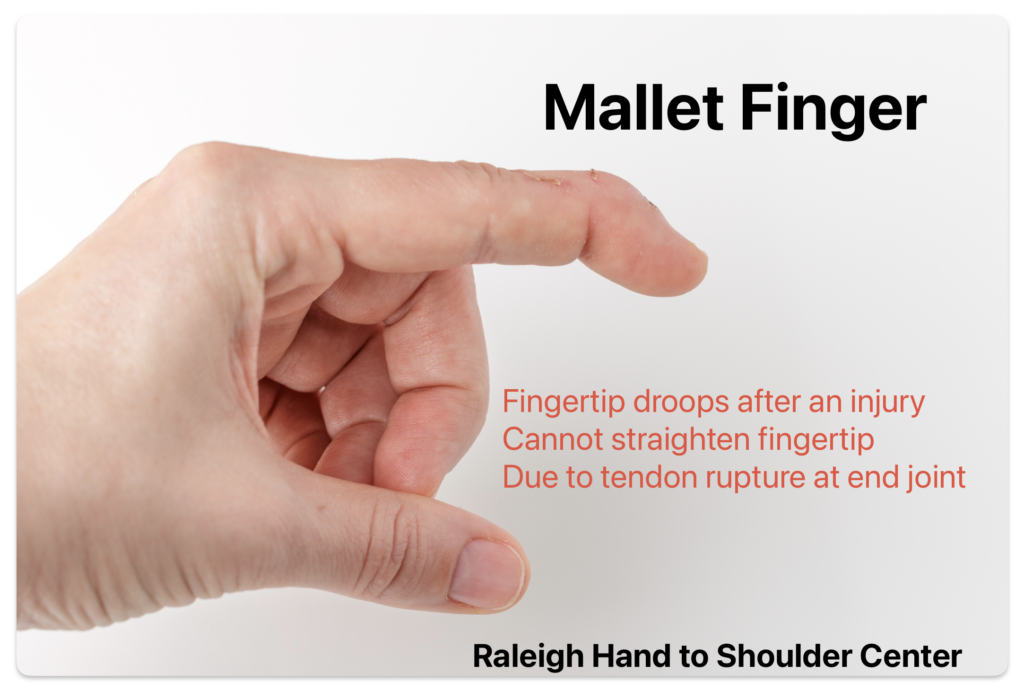
Mallet Finger
What is a Mallet Finger?
A mallet finger is a common condition resulting from a tear of the tendon which straightens the tip of the finger. This occurs at the distal interphalangeal (DIP) joint – the finger joint closest to the nail. This causes the fingertip to “droop” and people are unable to straighten the fingertip on their own. Occasionally, a piece of bone attached to the tendon has fractured, therefore x-rays are recommended to rule out a break in the bone. The mallet finger injury classically involves a forceful strike to the end of the finger during a sport, such as basketball or baseball. Sometimes the injury is overlooked at first as the person thinks the finger is “only jammed.”

How Are Mallet Fingers Treated?
Most patients with mallet fingers can be treated successfully with a splint, even if there is a fracture. If the joint is in good alignment within the splint, surgery is not necessary.
Non-operative treatment requires full-time use of a finger splint for at least 6-8 weeks. The splint may be removed daily to check for skin breakdown, but during this time the end joint of the finger should be kept straight at all times. Do not let the fingertip droop during the splinting program. Removal of the splint and bending the finger can re-tear the healing tendon. Showering with the splint is allowed, but you should dry the finger afterwards to avoid skin problems.
After 6-8 weeks of full-time splinting, the finger splint can be removed during the day and gentle finger range of motion can be performed. The splint should be used during heavy activities and during sleep at night for 2-4 more weeks. It may take several months for hand strength and finger range of motion to improve.
Occasionally surgery is recommended to patients who have a large fracture or a joint which has slipped out of alignment (joint subluxation). Surgery typically involves temporary pins to realign the joint.
What Can I Expect Long-Term Following Treatment for Mallet Fingers?
Most people are pleased with their function and appearance after non-operative treatment. It is common for the fingertip to droop a small amount, even with full-time splinting. This is called an “extensor lag” and usually does not cause a functional problem. Some people notice a tender “bump” at the joint after this injury. Most bumps smooth out and become less painful gradually over time.

Treat your Mallet Finger and Regain Function
Mallet Finger can be frustrating, making it difficult to straighten your finger. At Raleigh Hand to Shoulder Center, our team of specialists has the expertise to help you regain function. Please call our office to make an appointment or use our online scheduling tool to book a visit today!
This video is from the American Society for Surgery of the Hand.

Updated 6/21/2025

